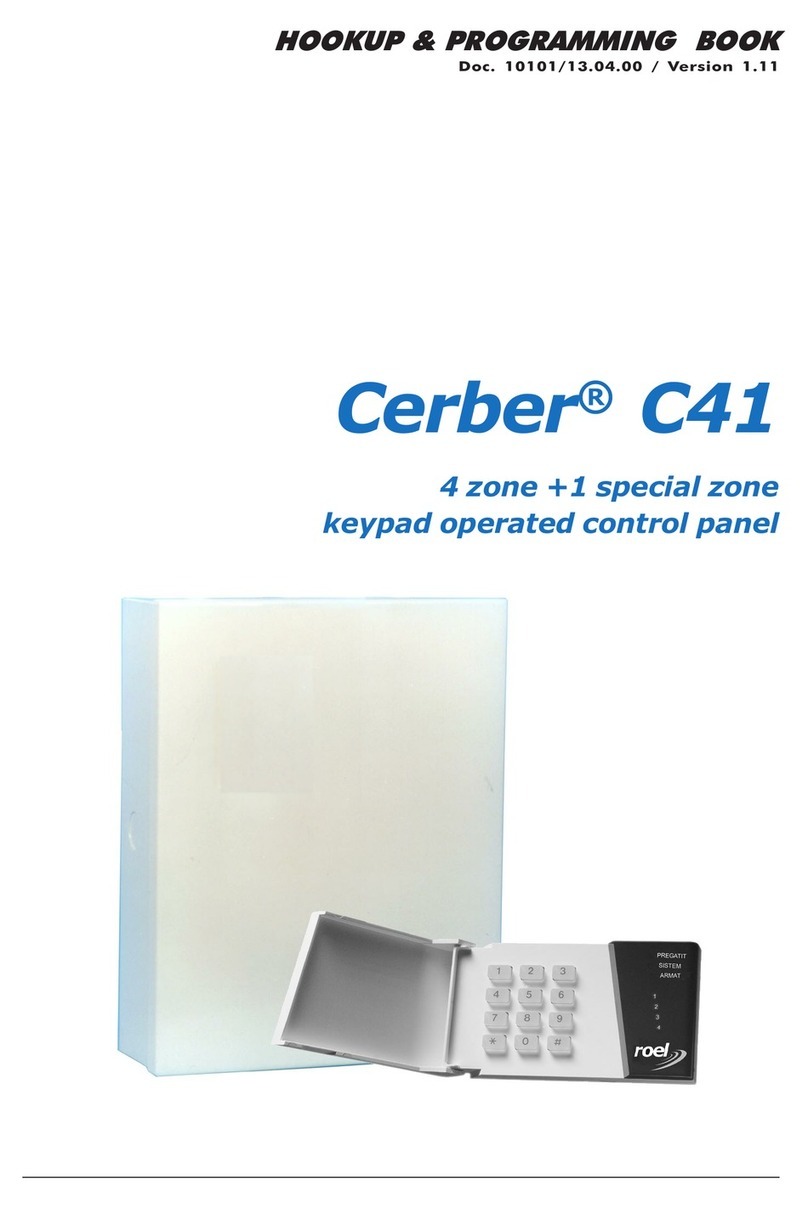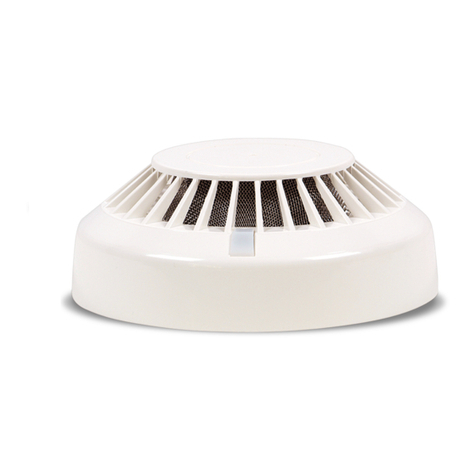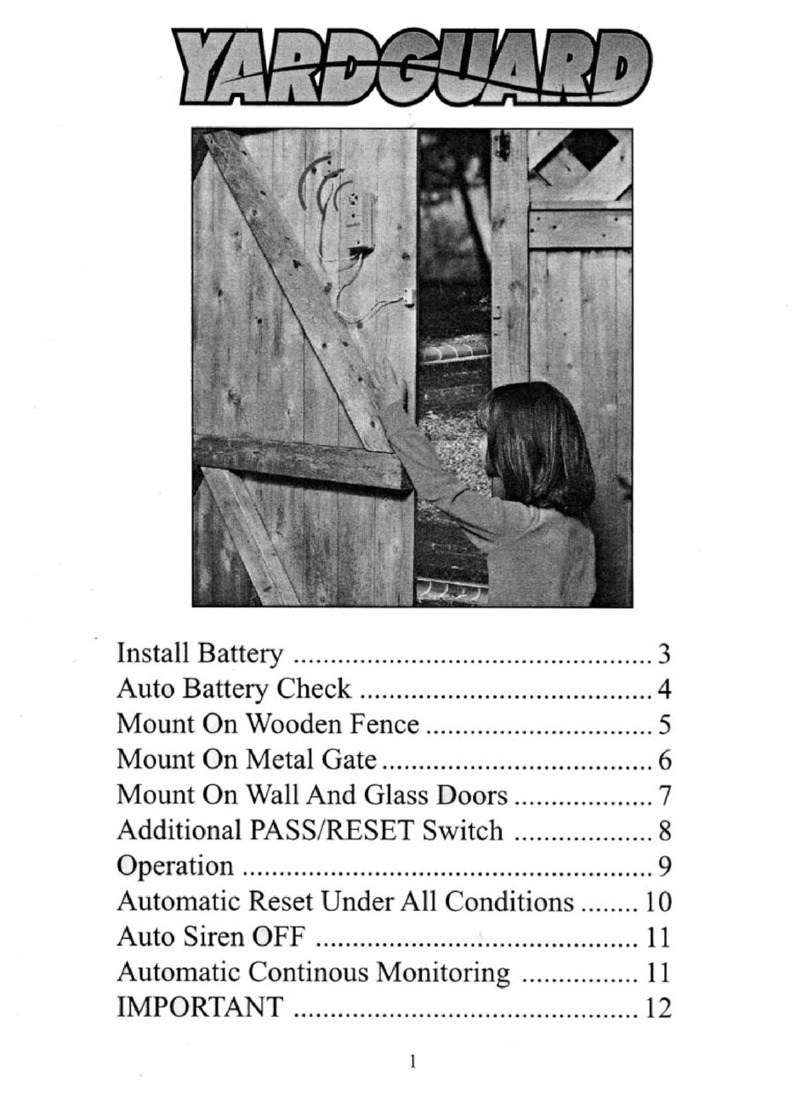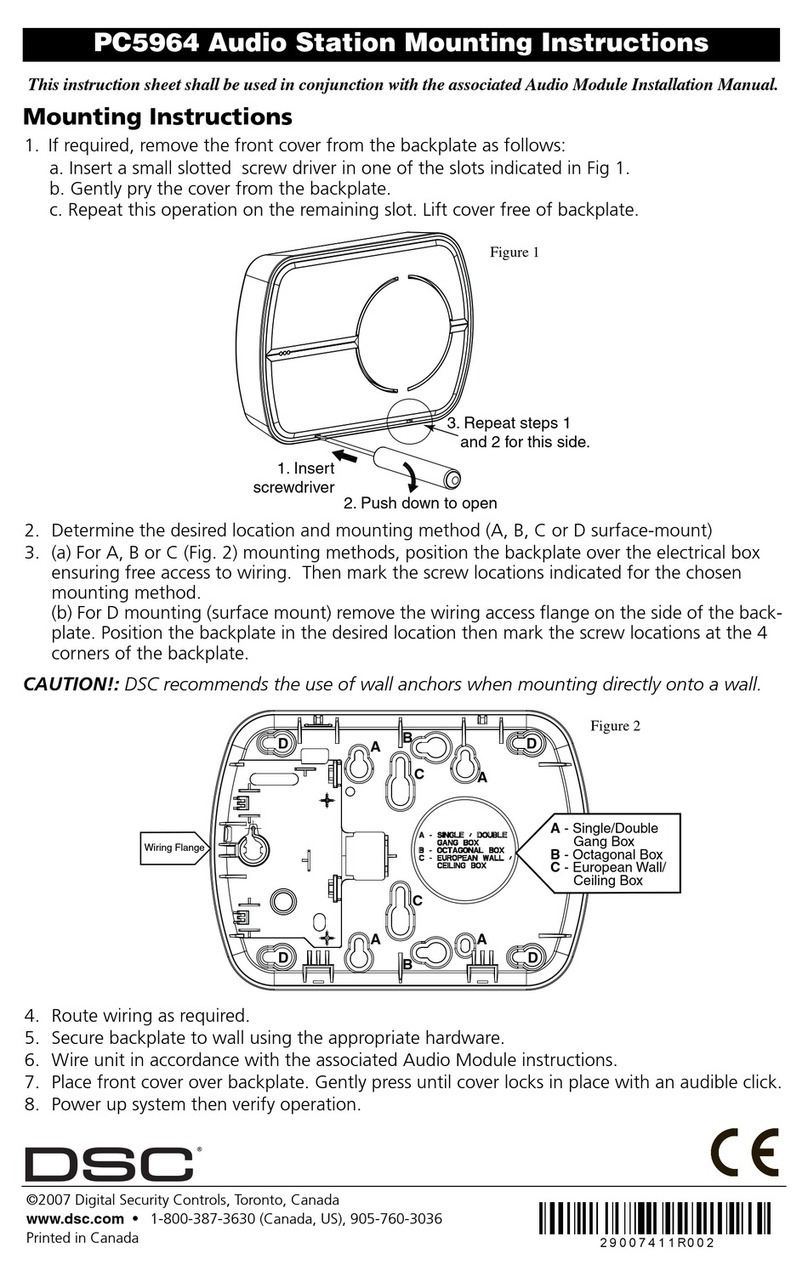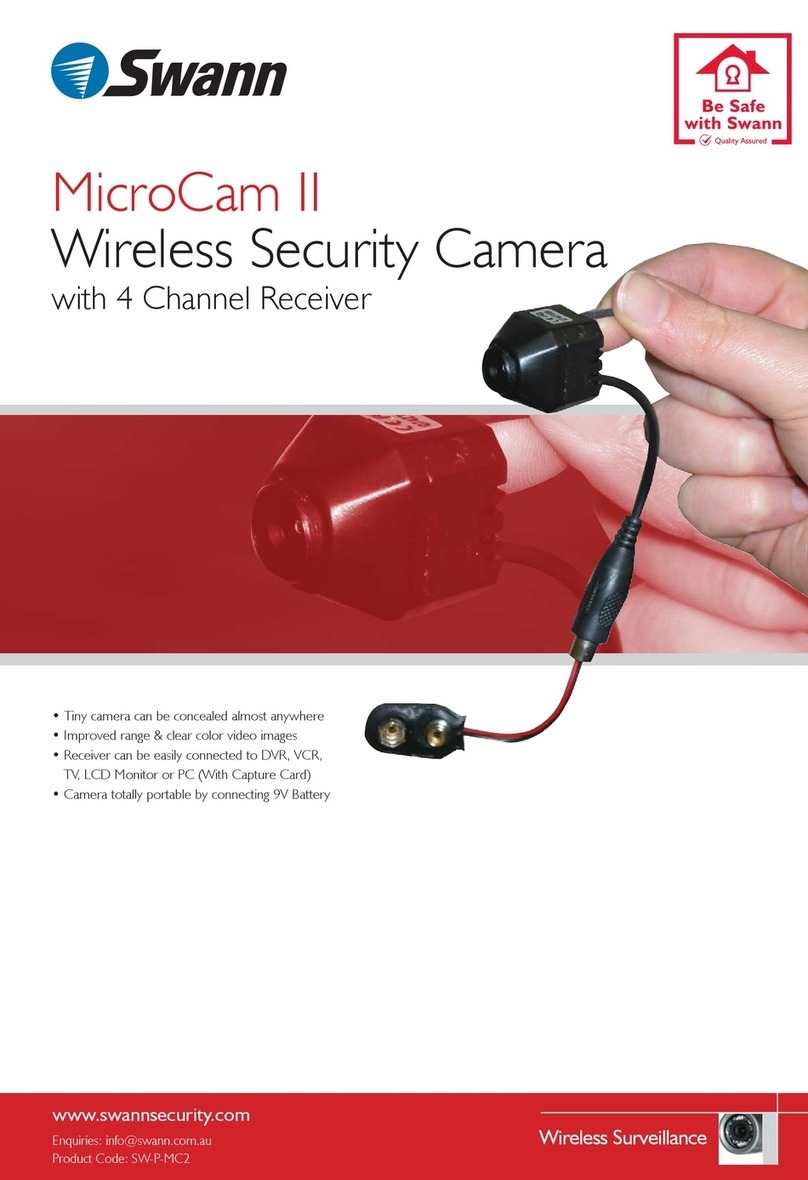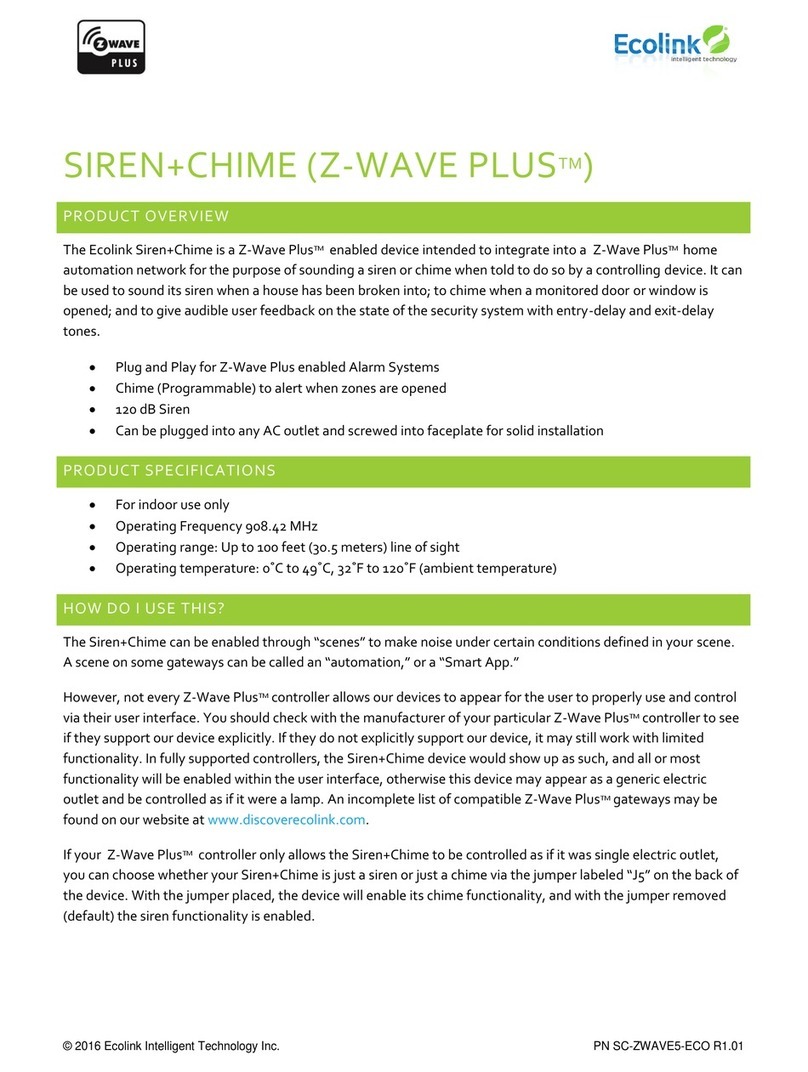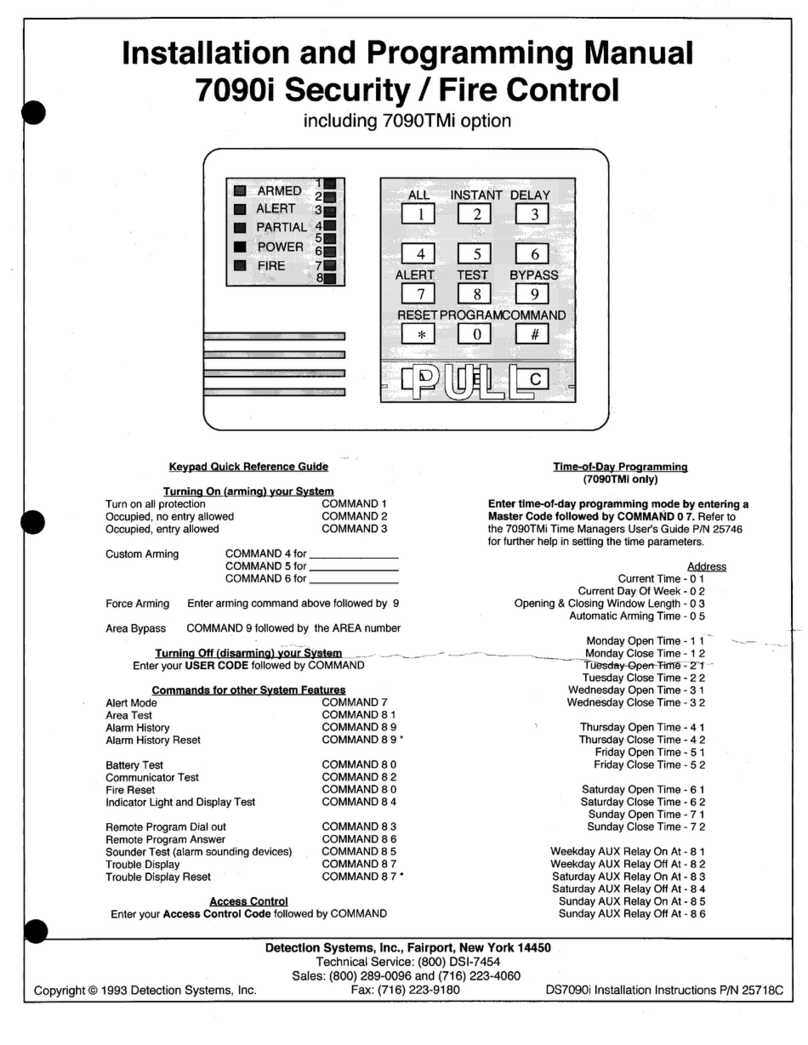ROEL Alcar H51 User manual

Installation Manual
D
OC
. 50102/16.08.00 / V
ERSION
1.0
Auto Alarm System
TECHNICAL FEATURES
STAND-BY CURRENT CONSUMPTION ............................................................................................. MAX. 15mA
SIREN OUTPUT ............................................................................................................................ MAX. 1A
TRUNK RELEASE OUTPUT ....................................................................................................... MAX. 500mA
WINDOWS ROLL UP WHEN ARMING, OUTPUT .............................................................................. MAX. 500mA
ENGINE KILLER OUTPUT .......................................................................................................... MAX. 500mA
DOORS INPUT ................................................................................................................ NEGATIVE TRIGGER 1
TRUNK/HOOD INPUT ........................................................................................................ NEGATIVE TRIGGER 2
CENTRAL DOOR LOCK RELAYS ..................................................................................................... 10A/12V
REMOTE CONTROLS ............................................................................................................... HOPPING CODE
PROGRAMMABLE PARAMETERS ............................................................................................... 16 PARAMETERS
ALARM MEMORY ........................................................................................ ALARM TYPE DISTINCTLY INDICATED
DISABLING FAULTY SENSORS ............................................................................... SENSOR DISTINCT INDICATION
SYSTEM STATE MEMORIZED WHEN SWITCHING OFF POWER
Romano Electro Intl S.A.
27-29 Calimachi str., 72266, Bucharest,
Tel.:40-1-242.20.20, Fax:40-1-242.20.30,

Installation ManualAlcar®H51
2
TABLE OF CONTENT
CHAPTER I: INTRODUCTION ............................................................................................................. 3
CHAPTER II: THE KIT ..................................................................................................................... 3
CHAPTER III: GENERAL FEATURES .................................................................................................... 4
CHAPTER IV INSTALLATION ............................................................................................................. 5
4.1 SIREN MOUNTING ............................................................................................................................... 5
4.2 PIN SWITCH MOUNTING AT HOOD AND TRUNK ............................................................................................ 5
4.3 CENTRAL UNIT MOUNTING ......................................................................................................... 5
4.4 CONNECTIONS .................................................................................................................................. 5
4.4.1 Cable set A ........................................................................................................................................ 5
4.4.2 Cable set B ........................................................................................................................................ 5
4.4.3 Cable set C ....................................................................................................................................... 6
4.4.4 Dconnector ....................................................................................................................................... 8
4.4.5 Econnector ........................................................................................................................................ 8
4.4.6 Fconnector ........................................................................................................................................ 8
4.4.7 G Connector ..................................................................................................................................... 9
4.4.8 H connector ...................................................................................................................................... 9
4.4.9 Pager connecting ............................................................................................................................... 9
CHAPTER V: SYSTEM OPERATING ...................................................................................................... 9
5.1 LEARNING / CLEARING REMOTE CONTROLS .............................................................................................. 9
5.2 SYSTEM PARAMETERS PROGRAMMING ................................................................................................... 10
5.3 SERVICE MODE / EMERGENCY DISARMING .............................................................................................. 14
5.4 ENGINE KILLING ............................................................................................................................... 14
5.5 REMOTE CONTROL OPERATING ............................................................................................................ 14
5.5.1 Arming/disarming with confirmation by siren chirps and flashing lights ....................................... 15
5.5.2 Arming/disarming silent ................................................................................................................... 15
5.5.3 Remote controlled bypassing the sensors .................................................................................... 15
5.5.4 Arming with silent alarm .................................................................................................................. 16
5.5.5 Car finding ....................................................................................................................................... 16
5.5.6 Panic ................................................................................................................................................ 16
5.5.7 Signalling the remote controls number ........................................................................................... 17
5.5.8 Anti-carjacking mode ....................................................................................................................... 17
5.5.9 Trunk release function .................................................................................................................... 18
5.5.10 Two level - Door unlocking, when disarming ................................................................................ 18
5.5.11 Two steps disarming ...................................................................................................................... 18
5.6 ELECTRIC WINDOWS CLOSING WHEN ARMING .......................................................................................... 18
5.7 REVERSE CAR MOVING WARNING ......................................................................................................... 18
5.8 DOOR OPENED WARNING ................................................................................................................... 18
5.9 AUTOARMING .................................................................................................................................. 19
5.10 PASSIVE ARMING/WARNING AT PASSIVE ARMING/TEMPORARY DISABLE OF PASSIVE ARMING ............................. 19
5.11 REMOTE CONTROLLED DOORS LOCK/UNLOCK AND/OR WHEN SWITCHING ON/OFF THE ENGINE ........................ 19
5.12 DUAL MODE ................................................................................................................................. 19
5.13 ALARM MEMORY INDICATION .............................................................................................................. 19
5.14 BYPASSED FAULTED INPUTS INDICATION .............................................................................................. 20
5.15 ANTISCANNING/ANTIGRABBING ......................................................................................................... 20
5.16 NON-VOLATILE MEMORY FOR SYSTEM STATES ....................................................................................... 20
5.17 ALARM SITUATIONS WHEN THE SYSTEM IS ARMED ................................................................................. 20
5.18 COMFORT FUNCTION ...................................................................................................................... 21
5.19 DOOR CONTACTS DELAY, WHEN ARMING .............................................................................................. 21
CHAPTER VI: TESTING/ADJUSTMENTS ............................................................................................. 21
6.1 REAL CONDITIONS TESTING ............................................................................................................... 21
6.1.1 Testing the detection of the burglary attempts .............................................................................. 22
6.1.2 Testing the central door lock commands ........................................................................................ 22
23

Installation ManualAlcar®H51
3
CHAPTER I: INTRODUCTION
Alcar®H51 is an auto alarm, remote controlled with hopping code. This facility offers a
stronger protection than the fixed code systems, since the remote control is changing the
code at each button pressing.
It is a user-friendly modular system that can be configured in a very complex way. The doors are
protected by pin-switches, apart from the trunk and the hood. The alarm assures the engine
killing. The command from the shock sensor (included in the basic kit) will pre-warn for weak
shocks. For strong shocks or repeated weak shocks the alarm will trigger in a specific way.
The ALCAR®H51 range has the following versions:
-ALCAR®H51 - ALCAR®H51 minimal kit,
-ALCAR®H51U- ALCAR®H51 + ultrasonic sensor incorporated;
-ALCAR®H51DL - ALCAR®H51 + central door lock module incorporated;
-ALCAR®H51P - ALCAR®H51 + auto-pager module incorporated;
- Any combination of the upper options (ex: ALCAR®H51UDLP- maximal configuration, with
ultrasonic sensor, with central door lock module and auto-pager module).
Supplementary external sensors can be connected, such as one-zone or two-zone microwave
sensor or ultrasonic sensor.
This way, the system assures the protection of the interior of the car and/or can warn when
someone gets close to the car.
NOTES:
1) In this manual ALCAR®H51 will be referred as the whole range of auto alarms of this
kind, meaning that such functions are optional for the various constructive versions;
2) In this manual the two buttons remote control is referred (button 1) and (button 2). If the
remote control has 4 buttons, then the first two only will be used for operating the car alarm. The
other two can be used for subsequent developments (ex: for garage doors command, for
operating a burglary alarm system etc).
CHAPTER II: THE KIT
In the box you will find the following:
1. Central unit 2. Remote controls (2 pcs.)
3. Pin-switch (2 pcs.) 4. Mounting cables (3 sets)
5. Warning decal (2 pcs) 6. Spare fuses (10A, 2A)
7. Shock sensor + cable 8. Engine killer relay
9. Ultrasonic microphones 10. Valet switch
11. State LED
22
sensors stabilization period) the shock sensor and/or the external supplementary sensor are
active. Check the fact that the system warns optical-acoustical by 3 short signals. Check also that
the power supply of the bypassed sensorswas disconnected on that specific arming period
(sensors LED is off and the alarm system does not respond when the sensor is tested).
6.1.1 Testing the detection of the burglary attempts
With the system armed simulate burglary attempts in all the possible ways:
1) Put the key in contact and try starting the engine; the relay contacts should open (the engine
should not start), and the system should trigger the alarm (by siren, flashing lights and optionally by
pager) for 30s (this is the alarm for engine starting attempt).
2) Open and close one by one all the doors, the hood and the trunk; the system should trigger the
alarm (by siren, flashing lights and optionally by pager) for 30s.
3) Open a door and leave it opened; the system should trigger the alarm (by siren, flashing lights
and optionally by pager) for 30s, three times subsequently. After that the doors input will be
bypassed the other functions of the system remaining active. If the door is closed eventually, the
input should become active again.
4) After passing the sensors stabilization period (20s after arming), hit the car slightly; the system
should prewarn (for weak shocks). After repeated shocks within 5s, the system should trigger the
alarm (by siren, flashing lights and optionally by pager) intermittently 2s ON, 1s OFF, for 15s
(repeated shocks alarm).
5) After the stabilization period passed (20s after arming command), hit in astrong manner the car;
the system should trigger the alarm (by siren, flashing lights and optionally by pager) intermittently
2s ON, 1s OFF, for 15s (strong shocks alarm).
6) If the system is provided with ultrasonic sensor and the input for the supplementary sensor is
programmed properly, then, aftyer the sensors stabilization period (20s after arming), by leaving the
window opened, introduce the arm inside, through the window; the system should trigger the alarm
(by siren, flashing lights and optionally by pager) for 30s (alarm for violating the interior of the car).
7) If the system is provided with proximity sensor (microwave sensor), and the input for the
supplementary sensor is programmed properly, then, after sensors stabilization period (20s after
arming), when approaching the car, within sensors range, the system should emit one signal at
every detection, according to the value of the parameter 11 (warning for approaching the car).
6.1.2 Testing the central door lock commands
If the car is provided with central door lock check if:
a) Doors are locked when arming the system.
b) Doors are unlocked when disarming the system (if parameter 6 is active).
c) Doors are unlocked when turning off the engine (if parameter 7 is active).
d) Doors are locked when turning on the engine (if parameter 8 is active).
e) Doors are not locked when the system is passive arming, after 30s after turning off the engine
and closing the last door (if parameter 4 passive arming is active).

Installation ManualAlcar®H51
4
CHAPTER III: GENERAL FEATURES
1. Arming/disarming by remote controls (confirmation by siren chirps and flashing)
2. Arming/disarming by remote controls (confirmation by flashing only)
3. Passive arming (programmable) / Warning at passive arming
4. Arming with silent alarm (no siren, programmable)
5. Two steps disarming
6. Protection against accidental disarming (auto-arming)
7. Doors protection
8. Trunk and hood protection, apart from the door input
9. Pre-warning for weak shocks, alarm for strong shocks or repeated weak shocks
10. External sensors connection possibility (microwave, simple or dual and/or ultrasonic)
11. Car find
12. Panic
13. Reverse car moving warning (programmable)
14. Warning for door open (programmable)
15. Warning when approaching the car (optional, programmable)
16. Warning when arming with the lights turned on
17. Engine killing
18. Option for deactivating any sensor by remote control
19. Defective sensors bypassing when arming
20. Separate power supply for each sensor input
21. Low consumption (disconnecting the bypassed sensors power supply)
22. Remote alarm notify (optionally, by pager)
23. Non-volatile memory for system parameters and remote controls
24. System state keeping when disconnecting and reconnecting the power supply
25. Learning/clearing remote controls procedure
26. System parameters programming procedure
27. Learnt remote controls number notification
28. Anti-car-jacking procedure (programmable)
29. Anti-scanning / Anti-grabbing
30. Service mode / Emergency disarming by valet switch
31. Central door lock module incorporated
32. Remote controlled doors lock/unlock and/or when switching ON/OFF the engine (optionally,
programmable)
33. Electric windows closing when arming the system (optionally)
34. Trunk release by remote control (optionally)
35. Events Log on the state LED (alarm memory indications)
36. Bypassed defective sensors indicated on the state LED
37. Back-up battery siren (optionally)
21
Notes:
a) If the system is armed with silent alarm function (no siren), the alarm state will be notified by
pager and flashing lights or only by pager, according to the value of parameter 9 (see 5.2., system
parameters);
b) Any alarm state can be stopped by pressing shortly (0.5s) the button 1 or 2, without disarming
the system. For disarming the system when the alarm is in progress, press button 1 twice (once to
stop the alarm and second time to disarm the system).
5.18 COMFORT FUNCTION
The Comfort function is available for some newer models of cars. At these cars, when twisting the
key the doors will lock. If maintaining the key twisted for more than 5s then the windows will roll up.
The Comfort function provides when arming a longer trigger (10s) on the lock doors output, no
matter of parameter 1 value.
Caution!
Do not run this wire directly to the door lock actuator, but to the command wires existing on the car!
For details please call the manufacturer!
5.19 DOOR CONTACTS DELAY, WHEN ARMING
This function is only used for the cars which maintain ON the dome lamp, a certain time, after the
last door is closed. In this case, the parameter 11 Door contacts delay, when arming will be
programmed actively. Then, the state of the door pin switches is only tested after the delay time
estabilished by parameter 12.
If after delay time, the alarm system detects at least a door opened, it notifies by 3 opto-acoustic
signals and bypasses the respective input. If afterwards all the doors will be closed, the respective
input becomes actively again. The signal for the door inputs will be taken from the (+) terminal of the
dome lamp.
CHAPTER VI: TESTING/ADJUSTMENTS
6.1 REAL CONDITIONS TESTING
1) Stop the engine, close the doors, the hood and the trunk. Arm and disarm the system with and
without acoustical confirmation like. The state LEDwill indicate as follows:
- blinking slow system is armed;
- off system is disarmed;
- on system is in alarm;
- blinking fast system is within the 30s after disarm command, when it is waiting for a
door to be opened (see 5.9).
- system is within 30s after the engine was turned off and the last door was closed and it is
counting the time for passive arming (see 5.10).
- short blinks after disarming and closing the last door the system indicates the alarm memory or
the faulty inputs type; while in programming mode the system indicates the parameters values.
2) Arm the system and bypass manually by remote control the sensors according to 5.5.5. Check
the fact that power supply of the bypassed sensor was disabled while armed (sensors LED is off
and the alarm system does not respond when the sensor is tested).
3) Arm the system and simulate various situations so, after 20s from arming (at the end of the

Installation ManualAlcar®H51
5
CHAPTER IV INSTALLATION
During this section there are presented the location, the mounting and the electrical connections
necessary for the alarm system installation.
This alarm system can only be installed on cars that have the negative pole of the
battery connected to the chassis!
NOTE: Read carefully this manual before starting the installation. If you are not sure you are able
to do it by yourself, call a specialist!
4.1 SIREN MOUNTING
The siren will be mounted in the hood compartment, away from high temperature sources and
humidity. The chosen place should not be obstructed in order not to attenuate the siren sound.
Also, the place should be as inaccessible as possible to prevent the tamper.
Fasten the siren up side down by using screws.
4.2 PIN SWITCH MOUNTING AT HOOD AND TRUNK
Choose the mounting place such as the pin-switches should be able to move about 6mm. in the
closed position of the hood and trunk.
4.3 CENTRAL UNIT MOUNTING
Choose a horizontal place, hidden, preferably under dashboard. Fasten the central unit with screws
on the car chassis.
4.4 CONNECTIONS
There are 8 connectors on the central unit (A, B, C, D, E, F, G, H). The connectors correspond
respectively to the cable sets A, B, C, D, F, G, H.
The connections will be made according to the general mounting diagram (D).
4.4.1 Cable set A
Commands the central door lock system.
The timing for commanding the central door lock system can be set to 0,8s. for electric door
lock and 4s. respectively for pneumatic door lock. The selection is made through parameter
1-Timing for door lock.
Before connecting the cable A and setting parameter 1, one should determine the type of central
door lock existent on the car. A simple way is to try and lock the car doors by locking the right-front
door, by locking this door:
1) the doors are instantly closing, then the car is provided with electric door lock system
2) the doors are closing in an interval of few seconds, then the car is provided with pneumatic
door lock system
4.4.2 Cable set B
B1 (black)
System GND. Connect to (-) pole of the battery.
Note: In order to improve the noise immunity it is indicated that the power supply wires (B2-red and
B1-black) to be connected directly to the batterys poles.
20
5.14 BYPASSED FAULTED INPUTS INDICATION
If when arming the system has bypassed any input (doors, hood, sensors) within 20s after arming,
then whn disarming, after opening any door the hood or trunk, the system will indicate by the state
LED, the type of input as follows:
1 blink - shock sensor
2 blinks - ultrasonic sensor
3 blinks - contact key (attempt to start the engine)
4 blinks - door contacts
5 blinks- hood, trunk contacts
After starting the engine the faulted inputs memory will be reset and the LED will turn off.
The alarm memory is prioritary towards the faulty sensors indication. So, the LED will indicate the
faulty inputs bypassed only if there was no alarm.
5.15 ANTISCANNING/ANTIGRABBING
ALCAR®-51, is protected for scanning and grabbing.
5.16 NON-VOLATILE MEMORY FOR SYSTEM STATES
When the system is powered again (after the power was OFF), it enters the state which was
previously (armed, disarmed, service, anti-carjacking). If the system was in the arming mode when
the power was OFF, then at the power restoring the sensors state and the event memory will be
restored and the system will tripp a panic alarm.
Note: There is a certain situation namely: if parameter 11 Door contacts delay when arming is
enabled, parameter 12 Door contacts delay duration is 5s, a door is opened when arming and
the power is breaked before the fifth second from the arming, then when rearming, if the door is still
open, the system enters a door alarm .
5.17 ALARM SITUATIONS WHEN THE SYSTEM IS ARMED
1. When opening a door, the hood or the trunk alarm by siren, flashing lights and optionally
by pager, for 30s;
If a door is left opened in a burglary attempt, the system triggers the alarm (siren, flashing lights and
pager), for three times of 30s each. After the 3 x 30s alarm sequence the doors input is bypassed
and the other functions of the system are still active. This is executed even if the alarm is stopped
by remote control.
If subsequently the related door is closed, the doors input becomes active again.
2. When trying to start the engine with the key alarm by siren, flashing lights and optionally
by pager, for 30s;
3. When the car receives a weak shock optical-acoustical warning for 1s.
4. When the car receives repeated weak shocks within 5s or a strong shock alarm by
siren, flashing lights and optionally by pager, for 15s, intermittently 2s ON, 1s OFF;
5. When violating the interior of the car, if the supplementary input is set for ultrasonic
sensor alarm by siren, flashing lights and optionally by pager, for 30s;
6. When approaching the car, if the supplementary input is set for proximity sensor
programmable warning (see parameter 10).
Other manuals for Alcar H51
1
Table of contents
Other ROEL Security System manuals
Popular Security System manuals by other brands
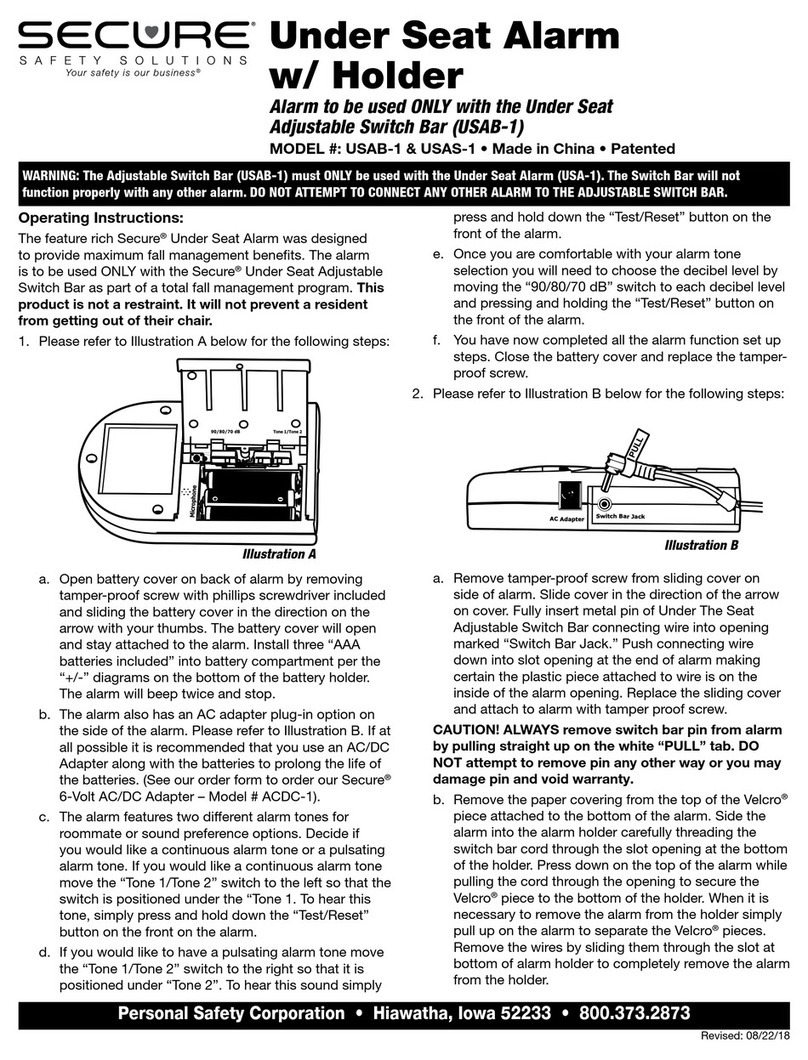
Secure
Secure USAB-1 operating instructions
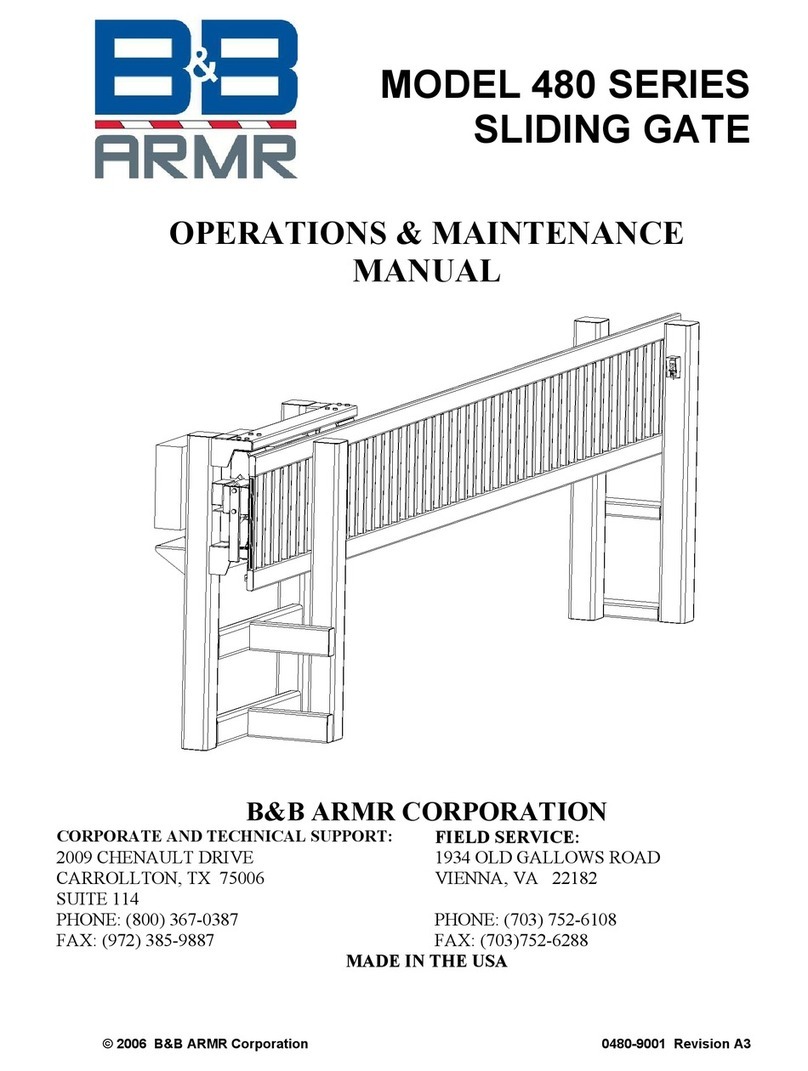
B&B
B&B 480 SERIES Operation & maintenance manual
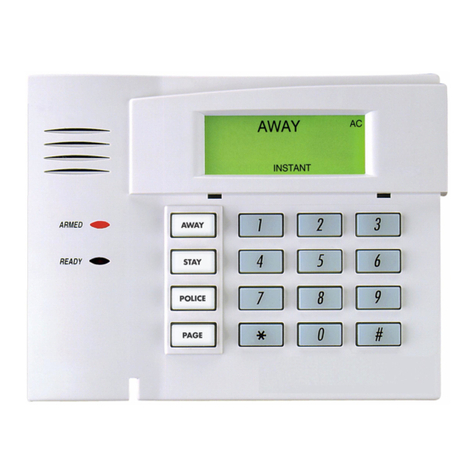
ADEMCO
ADEMCO VISTA-20P Series Installation and setup guide

Inner Range
Inner Range Concept 2000 user manual

Johnson Controls
Johnson Controls PENN Connected PC10 Install and Commissioning Guide
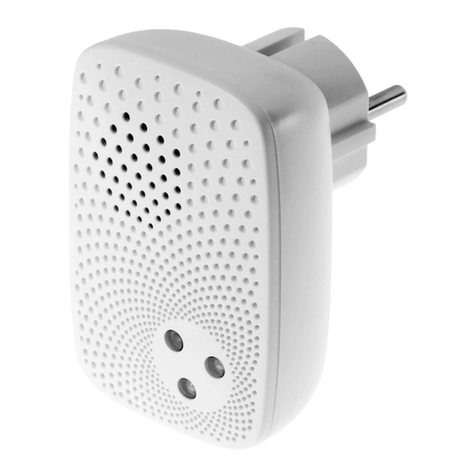
Aeotec
Aeotec Siren Gen5 quick start guide
